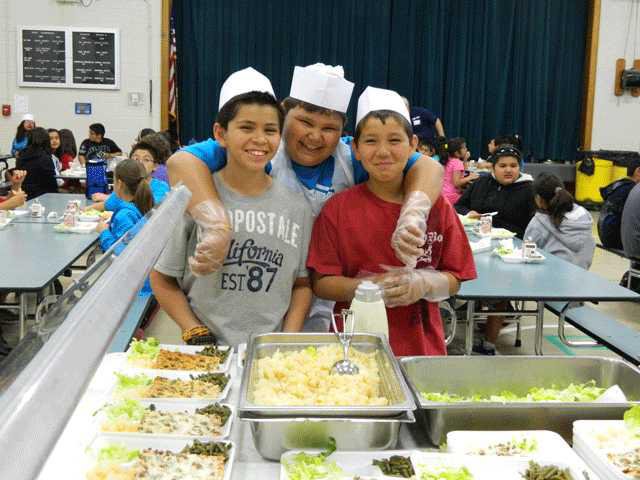There may be no pleasing everyone all of the time, but that doesn’t stop Karl Sprague from trying.
Sprague is the food services director for USD 428. At any one time it is his job to balance the needs and wants of up to 3,000 school children and their parents, 700 teachers and staff, more than 30 food-service employees and a school board as well as state requirements and federal guidelines.
“Our meals meet the needs of as many people as possible, but will probably not meet everyone’s desire,” he admitted realistically.
Sprague has seen lots of changes during the 38 years he’s been here, but the Healthy, Hunger-Free Kids Act of 2010 has really stirred the pot.
“That legislation passed by Congress and signed by the president changed so much of the national school lunch and breakfast programs,” Sprague said. “Since it was passed, it has been interpreted several times and continues to evolve, which means ongoing changes.”
And if you don’t think small changes can create problems, try taking the crunch out of Crunchy Munchy chili.
“When the rules first came out, we were limited on how much bread we served,” he said, explaining that the few corn chips on top of the chili created a real dilemma.
“We had to have at least one serving of grains per day in the elementary schools, but no more than nine per week,” Sprague explained. “Our cinnamon rolls were so big by themselves that they didn’t leave room in the week for the grains from the corn chips. The rules were later loosened and we were able to bring back the corn chips.”
With one crisis averted, others are still out there.
“There are some complaints; I even complain about it,” he admitted.
“Italian Dunkers were dropped because of the bread and calorie limits,” he said. “I’m still looking at how to bring them back.”
Another looming problem may not have a satisfactory solution.
“One of the high schoolers favorites is Crispitos,” Sprague said. “Next year all bread served must be whole-grain rich and the Crispitos are not. Unfortunately, the manufacturer doesn’t plan to change them.
“We had to cut out birthday cake while rules were juggled, but this year I’m back out as the ‘Cakeman,’” Sprague reported. “I’m hoping sanity will win and eventually we will have more leeway in what and how we serve the students.”
The biggest change from the past is that limits have been put on the number of calories a meal can have by age group, he said. Originally, limits were put in place on how much bread and protein could be served, but those limits have been dropped – as long as the meal remains in the calorie range for a specific age group. Sodium levels are starting to be enforced, but the final mandates may be changed.
“The number of fruit and vegetable servings has increased, even as kids throw more out. The thinking is that if this is what you offer, kids will eventually eat it,” he said, noting that doesn’t always happen.
“We are to serve more beans and legumes, but corn, peas and green beans are considered junk food,” he said, revealing the depth of his problems.
“We try to keep as many of the popular entrees as possible while meeting the guidelines and are always looking for ways to incorporate others,” he said.
Sprague fully understands the philosophy behind the national guidelines.
“Obesity is on the rise and Americans are less healthy,” he said. “The lack of exercise and poor eating habits are blamed, but how do you change what is being done at home? You don’t.
“Government can’t really dictate how parents feed their kids and what snacks they give them. It can’t force you to make kids get off the couch, so they looked for a place they do have control.”
“The federal government gives billions of dollars to states to disperse to schools,” Sprague said. “The feds are using that leverage to force the legislation down everybody’s throat.”
Last year, the USD 428 received nearly $1.25 million in state and federal subsidies for free and reduced lunches. That’s enough to get anyone’s attention.
Under Sprague’s direction, the USD 428 food-service program is a model for other districts. It continues to be self-supporting and does not receive money from local tax money in order to be solvent. It has won many awards over the years and is considered a prototype for what can be done.
“I like my program and will continue to adapt as needed,” he said.
Balancing Act
USD 428 food service a model for other districts





